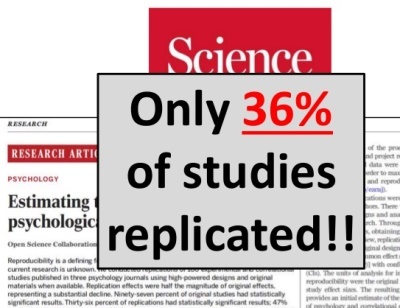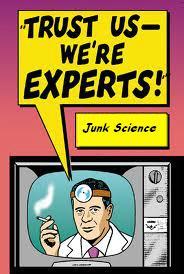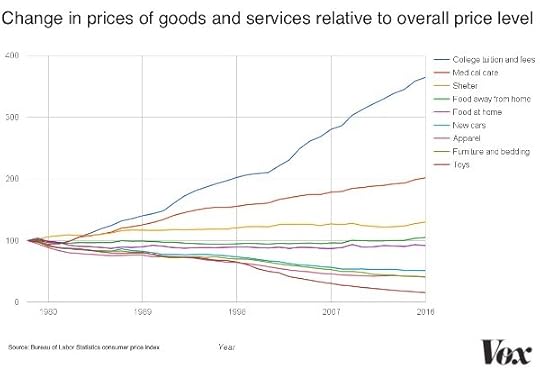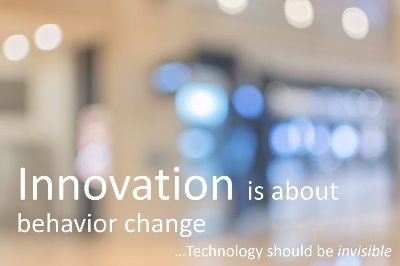Jeremie Averous's Blog, page 39
September 5, 2019
How Dismantling Facebook Is an Increasingly Strong Idea
In the past months the pressure on dismantling the Facebook empire has increased dramatically: from the NY times pledge by a former co-founder Chris Hughes ‘It’s Time to Break Up Facebook‘, calls to revitalize the old anti-trust laws (such as in ‘Steering with the Windshield Wipers‘ by Cory Doctorow). And all of this under increasing evidence that more or less voluntarily social networks such as Facebook have strongly influenced elections (listen to the TED talk about ‘Facebook role in Brexit and the threat to democracy‘).

One particular aspect that appears to be concerning and specific to Facebook is the unrestricted power of its founder Mark Zuckerberg (owning 60% of the voting shares) and thus the associated governance issues (things are a bit different in other internet companies). This is a particular strong point made by Chris Hughes in his column, and is quite noticeable.
Another strong aspect coming out of all this literature is the fact that certain free market ideology developing since the 1970s have made acting against monopolies less straightforward than before, and that it would be legally harder today to apply those principles.
I truly believe that sooner or later, some action will be taken against internet behemoths in the field of anti-monopoly. They might defend themselves and hire superb lawyers, one day will come where their dominance must be kept in check. Let’s hope it is not too far away.

September 3, 2019
How to Overcome the Science Reproducibility Crisis
Following up on our previous post on “How Fake Science is Strongly on the Rise and Endangers Us“, the issue or reproducibility in science is also coming up strongly: even paper and findings recognized as legitimate for a long time are put in question by the inability to reproduce results, and more specifically in human sciences. This post ‘Why Your Company Needs Reproducible Research‘ provides a good summary of the issues at stake.

Recent efforts are reproducing psychology results lead to “Only about 40% of the findings could be successfully replicated, while the rest were either inconclusive or definitively not replicated.” Similar proportions are obtained in business-related research.
While this may be due to very human bias like the need to show some results from research, and the inherent complexity of the environment around some experiments, there is definitely a need for more thorough replication requirements prior to confirming results. This puts more challenge on researchers but is probably a need in a world that sees increasingly fake science.
Science will always progress by invalidating previous results or restraining the boundaries of validity of previous results. This is a normal process, still we need to be wary to ensure reproducibility of results before they are spread as invariant truths.

August 31, 2019
How Fake Science is Strongly on the Rise and Endangers Us
In this excellent paper ‘The Rise of Junk Science‘ the issue of increasing number of improperly reviewed publications is described. They now substantially dominate in number more professional scientific publications. Some even believe that there is a “global “epidemic” of scams by academic journals that was corrupting research and, in effect, endangering the public“.

With much easier access to publishing, there is an increasing number of scam scientific journals that are easily accessible, do not practice rigorous peer reviews. There are also an increasing number of fake conferences, that even name recognized scientists that don’t even attend in an attempt to attract other reputable scientists.
While this issue is probably not new – it was always possible to do vanity publishing – it spreads to an unprecedented level, and in a context where it is increasingly difficult to distinguish between legitimate and fake science. “for the first time in history, scientists and scholars worldwide are publishing more fraudulent and flawed studies than legitimate research—maybe ten times more. Approximately 10,000 bogus journals run rackets around the world, with thousands more under investigation, according to Cabell’s International, a publishing-services company. “We’re publishing mainly noise now,” Franco laments. “It’s nearly impossible to hear real signals, to discover real findings.”
Luckily there seem to be an increasing awareness of the issue and modern technology also allows to develop powerful tools to distinguish between junk science and legitimate science. Still we need to be careful that something looking like a scientific paper might also be fake or junk!

August 29, 2019
How to Design a Font to Better Remember What you Read
I love this initiative from an Australian University: Sans Forgetica, the font that is scientifically designed to help remember courses: see the Sans Forgetica page.

“Sans Forgetica is a font designed using the principles of cognitive psychology to help you to better remember study notes. It was created by a multidisciplinary team of designers and behavioural scientists.”
The interesting part I find is that “Sans Forgetica is more difficult to read than most typefaces – and that’s by design. The ‘desirable difficulty’ you experience when reading information formatted in Sans Forgetica prompts your brain to engage in deeper processing.”
By making harder and longer to read and understand, it seems that we remember better. I find that is quite an interesting insight. It shows that it is important to spend sufficient time reading and processing what has been read to better remember.

August 28, 2019
How Ideal Clients can Accelerate your Business and Personal Developments
In the professional services business, we generally underestimate the importance of the Clients in our development and our success – both as a business and as professionals. Ideal Clients are those that have sufficient confidence to entrust you with challenging issues, pushing you slightly out of your confort zone.

In general, Clients are important for the success of any business endeavor. This can be observed for any project, whether internal or external clients. Incompetent clients or clients that don’t care do not entice for success and development.
Ideal Clients are not the same as Dream Clients. Dream clients may be those for which work will be easy and incredibly well compensated. Ideal clients are challenging while establishing sufficient confidence that you can be creative, stretch yourself and experiment (within certain bounds).
As Pamela Slim remarks, it is also essential to recognize the person in the Client. We need to be able to establish a strong personal relationship. This is quite necessary to allow the confidence level necessary. Also, our intervention should also seek to advance the person of the Client as a person and within its organization. Therefore, the ideal client is someone we can relate to professionally on a personal level too.
Choosing your Clients as a professional services business is not a luxury. It is absolutely essential for sustainability to have challenging yet trusting clients that will develop yourselves and your business. I have made it an essential decision factor when considering the possibility to take on, or continue an assignment.
This post is a follow-up from the post ‘ Useful Lessons Learnt for the Professional Services Business ‘ based on Pamela Slim’s post ‘ 23 Lessons from 23 years in business ‘.

August 27, 2019
How we Should not Use Software to Compensate for Systems that are not Properly Designed
The now famous crisis of the Boeing 737 Max shows us that there are limits to what software can compensate when a system it not properly designed. This post ‘Boeing 737 Max: Software patches can only do so much‘ is worth reading.

It actually boils down to a system-engineering issue. Adding layers upon layers of fixes to try to compensate functionalities on legacy systems only work up to a certain point. The author “cautioned his customers against using software as a patch for systems that for economic reasons or reasons of expediency, were not purpose-built. This applies not just to the most complex heterogeneous networks of systems but also small devices.”. This leads to “spaghetti architecture, or architecture by committee“, missing the important step of first listing all requirements and making sure there is consistency in the overall system and no systemic flaws.
More generally, “the old stuff just doesn’t migrate well; it needs to be redesigned from scratch“. In the next few years we can expect that many platforms used in many industries will indeed need to be redesigned to overcome their obsolescence and take advantage of the benefits of modern technology.
Existing platforms can only be upgraded to a certain point of complexity and layering, before we lose control. Then they need to be redesigned from scratch.

August 24, 2019
How the Relative Increase of Cost for Education or Health Care Can be Explained
In a very interesting series, Alex Tabarrok explores the ‘Baumol effect‘ – the rise of salaries in jobs that have experienced no or low increase of labor productivity, in response to rising salaries in other jobs that have experienced higher labor productivity growth. Read for example ‘Why Are the Prices So D*MN High?‘ or ‘The Baumol Effect‘.

This effect explains in particular the relative rise in the cost of education and health care, and may also explain the relative rise of the cost of housing among other factors. Sectors with the most productivity increase will drive an increase in the cost of sectors will little increase of productivity. Alex Tabarrok’s post ‘The Baumol Effect‘ gives a deep insight and excellent examples of the reasons behind this effect.
Thus as we enter a new age where the relative cost of certain services will decrease substantially, we will observe the value of other services to increase relatively, changing substantially the balance of our personal budgets. It has already occurred during the industrial revolution: the relative cost of foodstuff and the share in our budgets has decreased substantially. It will now happen similarly for other aspects. Just because we can’t quite improve the productivity of certain activities.

August 22, 2019
How to Avoid Burn-Out – a Proven Approach
Burn-out is now recognized as an occupational condition in many countries and is observed to become increasingly prevalent. In this post ‘A simple strategy helps doctors fight burnout. Could it work for the rest of us?‘ a simple method is described that appears effective in hospitals, where it is a major concern.

This method is simply to get a conversation going about difficult workplace situations, with minimum framing and facilitation. “Wherever they are, the structure is the same. Organizers choose a topic: dealing with patients’ families, for example, or a deep dive into a particularly wrenching recent case. A pre-selected panel of volunteers shares their perspective to get the conversation started. Then it opens for discussion. Moderators gently steer away from efforts to diagnosis or solve problems—no small feat in a room of people who diagnosis and solve all day, every day. The normal hospital hierarchies do not apply. The only thing participants are allowed to do during rounds is talk about how they feel. No judging. No fixing. Just talking.“
The emotional connection thus created seems sufficient to recreate a sense of purpose and get rid of the strains that are at the source of burn-out. It has been observed that burn-out is not just physical (lack of sleep for example) but is also psychological such as loss of the sense of purpose. This method addresses directly the psychology and just creating a location for emotional sharing appears effective.
It goes to show that the modern workplace does not allow sufficiently deep emotional sharing and engagement, and that may be something that needs to be addressed more consistently.

August 20, 2019
How Innovation is Actually Behavior Change
In her post ‘Innovation is About Behavior Change‘, Valeria Maltoni makes, I believe, and excellent point. Innovation or invention is not about the tangible product, it is about how it changes habits and behavior.

This explains why there are so many inventions which seem quite a breakthrough but that never spread: it is because the associated behavior change did not happen. Maybe because there was a force of inertia, maybe because something else happened at the same time that pulled behavior change in the opposite direction.
It is a lesson for all inventors and innovators: don’t just focus on how marvelous your product is. Spend most of your effort working on the behavior that needs to change for its adoption. Work on the habits, on the social aspect of behavior, and anything that will make your innovation unavoidable on a day-to-day basis.
Innovation that would not consider behavior change is doomed. And as a Business Angel I will recognize that as a major criteria when judging the adequacy of the development plan of startups.

August 19, 2019
How We Need to Learn to Say ‘No’ – and Get Others to Say ‘No’ Too
Following up on some highlights of the excellent book ‘Never split the difference: negotiating as if your life depended on it‘ by Chris Voss, he has a quite convincing development on the need to be able to say ‘no’ and get your counterpart in a negotiation say ‘no’ too.

It “is difficult for many people because they go directly against one of society’s biggest social dictums. That is, “ Be nice” We’ve instrumentalized niceness as a way of greasing the social wheels, yet it’s often a ruse. We’re polite and we don’t disagree to get through daily existence with the least degree of friction. But by turning niceness into a lubricant , we’ve leeched it of meaning.” As a result it becomes quite impossible to know exactly what the person is feeling.
““ No ” is the start of the negotiation, not the end of it. We’ve been conditioned to fear the word “ No” But it is a statement of perception far more often than of fact. It seldom means, “ I have considered all the facts and made a rational choice” Instead, “ No ” is often a decision, frequently temporary, to maintain the status quo. Change is scary, and “ No ” provides a little protection from that scariness.”
Chris Voss goes on presenting a number of techniques aimed at provoking a clear ‘no’ as a starting point for earnest negotiation. He even mentions that if it is not possible to get a ‘no’ there is probably something hidden that is worth uncovering.
Let’s give ourselves and our counterpart the permission to say ‘no’. It is an excellent foundation for further discussion and negotiation.




